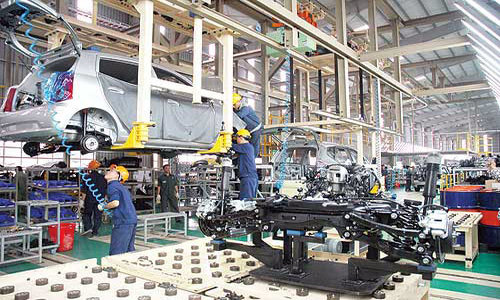Vietnam: Tariffs on auto parts reduced to 0% starting 2018
According to plans, 30 categories on auto parts, for engines under 2000cc, with custom code from 98,49,10 to 98,49,40 will no longer be applied tariffs. From January, a greater number of cars is expected to be imported from neighboring nations. The government wants to protect domestic car assemblers, as well as foreign automakers operating in the country.
The zero tariff will be applied to car components used for the 2000cc, nine-passenger vehicles or lower specifications that account for about 70% of all new car sales in the country. Meanwhile, for nine-passenger vehicles or lower specifications with 2000 – 2500cc engines, tariffs will be applied in accordance with custom code 87,03 based on the regulation of the World Trade Organization (WTO) and Most Favored Nation (MFN).
In order to be applied for the 0% tariffs for auto parts, enterprises have to meet requirements on the overall minimum car number and the specific number for certain type of cars. Specifically, for tariffs from 0 – 7%, enterprises have to have a certain number for total cars with 2000cc engines and the minimum number of cars for each type as follow: Cars with engine under 2000cc, consume 7l/100km and is qualified for Euro 4 emission standard (period 2018-2021) and by 2022 to reach the Euro 5 emission standard. The overall cars number for 2018 are 34,000 units; in 2019 are 40,000 units, 2020 are 46,000 unites, 2021 are 53,000 units and by 2022 are 61,000 units per year. Total number for 2018 – 2022 are 234,000 units.
While for the number of certain type of car, the Ministry of Finance regulates the required number and localization rate. In 2018, the number is 20,000 units with minimum localization rate of 20%; In 2019, the number is 23,000 units with minimum localization rate of 25%; In 2020, the number is 27,000 units with minimum localization rate of 30%; In 2021, the number is 31,000 units with minimum localization rate of 35%; In 2022, the number is 36,000 units with minimum localization rate of 40%. So total minimum number of cars and the required localization rate for period 2018 – 2022 are 137,000 cars and 40% respectively.
Starting in January, automakers operating in Vietnam will be free from a 10-30% duty on imported parts if they meet certain conditions in terms of emissions, the number of cars produced, and the ratio of local procurement of parts.
New car sales in Vietnam topped a record 300,000 units in 2016. However, after the planned removal of car tariffs within the ASEAN economic bloc, the number of imported cars from Thailand and other countries is likely to increase, which may push down domestic car prices by up to 20%. In addition, domestic consumers are becoming more conservative in their spending. The zero tariff is aimed at not only protecting local automakers, such as Truong Hai Auto, better known as Thaco, but also keeping Toyota Motor, Honda Motor and other foreign players within the country.
The government is keen to grow domestic industries, which is vital for it to achieve its goal of making the country an industrial nation by 2020. The auto sector is a core part of the plan, but without established homegrown manufacturers, procurement of auto parts has mostly come from abroad. Vingroup, Vietnam’s top developer, in September announced plans to expand into car production, with substantial support from the government.


 English
English




